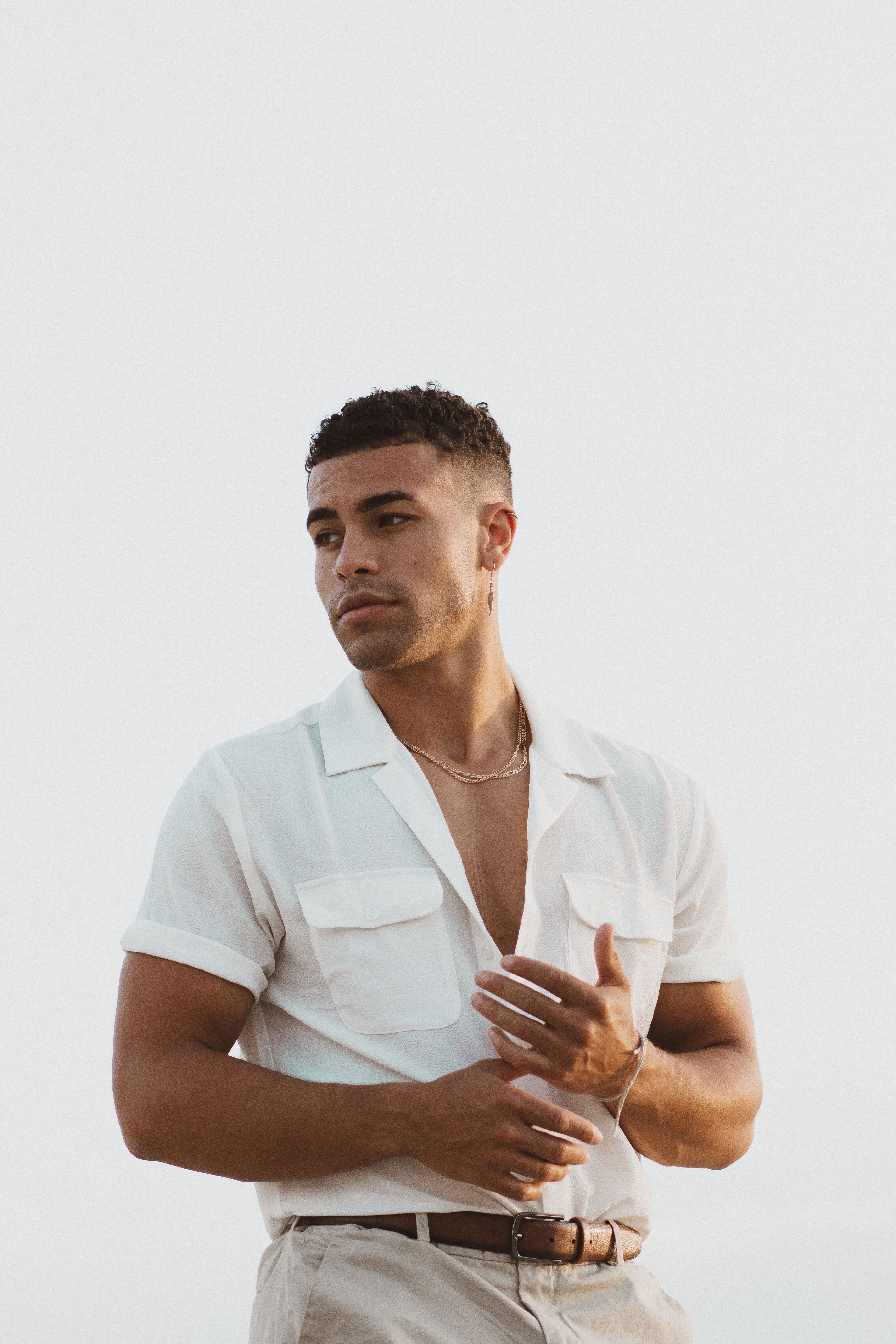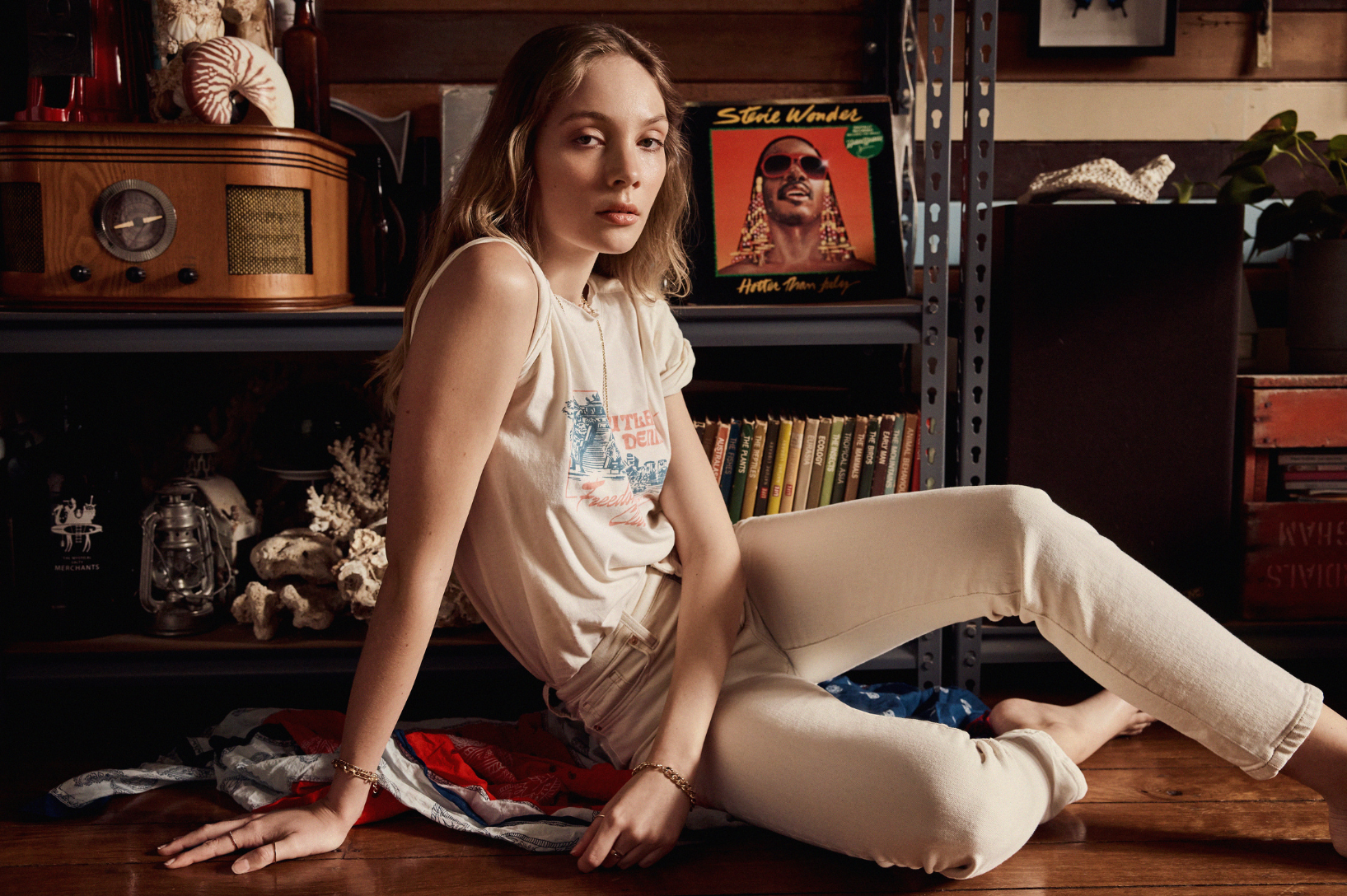What is a clothing supply chain, and why is it that so many fast fashion companies can’t trace where their products are made?

If you’re relatively new to the ethical fashion space (or not at all new), you’ll have noticed this term popping up a lot. If you google ‘supply chain’, you’ll get a bunch of information about economics. Not an entirely irrelevant topic, but you’re not going to get the information you’re looking for. Whether you’ve been confused about the term, or you’re just soaking up as much information as you can, may I present to you: Your Guide to Understanding the Garment Supply Chain.
Not the literal variety, but the chain-of-events variety. When most people think of ethical fashion, they think of the clothing production stage of the supply chain being dealt with appropriately. A clean, safe, air-conditioned factory, with well-paid makers coming in for a normal 9-5 day of sewing up garments. But this is just one event in the supply-chain-of-events.
For the sake of understanding each stage of the supply chain, I thought we could follow along the life-cycle of a t-shirt.
Quite literally, we need to start from the very beginning; think the initial event, the things from which we can reap raw materials that will go into the fabric, thread, labels and details of the shirt. Cotton seeds, hemp seeds, flax seeds, sheep, alpaca, trees for wood pulp, crude oil (which obviously can be traced back further, as can, y’know, trees). While this isn’t an exhaustive list, we begin to see that in order to make a t-shirt sustainably, we need to carefully consider our sources from the initial stages.
Raw Materials & Fabric Manufacturing
Almost every one of these raw materials can be used- and pardon me for being dramatic- for GOOD or EVIL. Take wool! It’s renewable, it’s biodegradable, and the International Wool Textile Organisation states that 50% of the weight of wool is pure organic carbon. Carbon is literally converted into wool by the sheep consuming grass. Wool also needs to be washed less and at cool temperatures, lowering its ongoing impact down the track. But the wool industry is rife with animal abuse, especially via practises like mulesing, whereby deep strips of skin are cut off the sheep, ostensibly to prevent flystrike. It’s a cruel and unnecessary practice. To make a woollen t-shirt ethically, you can make sure your wool is sourced from farms certified by the Responsible Wool Standard (RWS) or ZQ Merino. Hello Icebreaker and Allbirds for completely nailing the use of this fabric, and doing so ethically.
We could also look at cotton, arguably the most common fabric to make a shirt out of. Yes, it’s a natural and biodegradable fibre, BUT the cotton seed crops are treated with a toxic cocktail of pesticides that damage the earth and the farmers health so severely it often leads to death. On top of that, it’s an extremely thirsty crop. Our t-shirt requires 2,700 litres of water to make it. An ethical alternative would be organic cotton, certified by the Global Organic Textile Standard (GOTS). One step better? Recycled cotton!
‘CRUDE OIL??!’ I hear you exclaim! Yep. Your polyester tee was created from fossil fuels. I probably don’t need to go into this further. However, there are clever ways of wearing polyester and other plastic-fabrics ethically. Search for fabrics that have been made from recycled bottles, like the activewear over at Amble, or recycled fishing nets, à la Baiia Swimwear. Another alternative is deadstock fabric, which is any fabric that has been discarded and would have ended up in landfill had it not been reappropriated.
Wood-pulp. Alrighty! This is a clever cellulose fibre. You’ll probably know the end product of this manufacturing process by one of its street names; Rayon or Viscose. There’s the obvious problem associated with anything that requires trees; clearing of old-growth forests. It’s also incredibly greenhouse gas intensive and in order to breakdown the pulp into a workable fibre, toxic solvents are often used (such as Carbon Disulfide). On the plus side, it’s less water-intensive than cotton. An ethical version of this is Tencel, created by Lenzing AG. It’s essentially a brand-name of Lyocell, a form of Rayon that tends to use more environmentally friendly solvents. Tencel is great because it’s managed in a closed-loop system, so all the solvents 99.8% recovered and recycled.
I don’t want to move on to the next event in our chain-of-events without shouting out the OG ethical fibres, Organic Hemp and Organic Linen, made from hemp and flax. They’re awesome. Minimal water, no pesticides, super easy to grow even in crappy soil. Strong, and biodegradable when no longer wearable. These guys are the BEST!
Okay. We’ve picked out an ethical fabric and ethical trimmings to make the tee with. We’ve considered the environmental, human and animal impact so far. Now we need to figure out how to manufacture the t-shirt without impacting the garment workers.
Garment Manufacturing
Really the BEST thing we can do to improve working conditions at this event of the chain is to cut out the middle-people. Icebreaker speaks about this in their most recent transparency report;
‘Many apparel brands only have direct relationships with their ‘tier one’ garment vendors, or access their factories via third parties and agents. We don’t use agents – this creates an invisible supply chain. It makes traceability and transparency impossible…we are directly connected with all aspects of our products’ creation – from merino growers to top makers (cleaned merino fiber), yarn spinners, fabric makers and trim suppliers.’
If, as we manufacture our t-shirt, we’re regularly showing up to the factories we work with, if we know that the policies of those factories (eg. Maternity leave, holiday pay) are being met, if we can audit independently (important particularly for big brands), if we can see that workers are treated well and are happy, we can have greater confidence in an ethical supply chain. If we’re a smaller brand, we might make in-house on our own sewing machine. Similarly, if we’re a larger brand (like Reformation), we might have the resources to have an entire manufacturing warehouse in-house!
Whatever the situation, transparency is of utmost importance. Some awesome brands like Lois Hazel are radically honest. Her website boasts details of every aspect of her sourcing, from manufacturers to fabrics to labels and packaging. She even has a breakdown of the cost of one of her own t-shirts, down to her profit margin. Kowtow is equally transparent, and goes so far as to not use zippers, because they can’t find zips they consider ethical enough to incorporate into their design. Instead, they’ll use things like ethically sourced wooden buttons.
I know when I think of the garment supply chain, my mind generally focuses on the previous two ‘events’. But what happens once our t-shirt is finished and ready for distribution is important too. We know that one of the most sustainable choices we can make with any of our buying habits is to shop locally. I love a lil’ international shop, but realistically I know it’s always going to lower my eco footprint to buy from Aussie labels. Think about the environmental cost of transporting one item of clothing halfway ‘round the world! More urgently still, if we consider a big label like Zara- how many countries do they manufacture in? How many countries do they have stores in? How fast is their garment turnover? How can we measure the environmental impact of such a HUGE amount of transportation/packaging?
The chain doesn’t stop there, either. Our t-shirt will be washed and re-worn. There’s impact right there. We can wash in cold water, in non-toxic detergent, and not after every single wear. We can choose to avoid toxic dry-cleaners, and to love and wear that garment regularly. It might begin to loosen at the seams, or develop a hole. We can mend that t-shirt to maintain an ethical consumer stage of the supply chain.
Wear and Tear
Some brands, like ABC.H label, will mend the clothes you buy from them for you! This is such a brilliant way to maintain sustainability all the way along the chain. But eventually, a garment we love will die, and we can’t mend it anymore. Eileen Fisher and Kowtow take back every garment that can’t be worn any longer, and they either store those garments ‘til more innovative recycling technologies are developed in future, or they find a way to produce something new and beautiful from those items- Eileen Fisher’s second and third life programs are a creative solution to preventing their clothes from ending up in landfill. ABC.H has a guide that comes with their garments for planting them in the garden to decompose naturally. This is made possible by using thread of the same fabric as the garment. While we don’t yet live within a circular economy, we can make choices to bring the lifecycle of our t-shirt as close to a closed-loop system as possible. Maybe by planting it underneath our own flax crop ;).
We’re in a day-and-age of increased awareness around the ethics of fashion. So many amazing labels have done the hard work of delineating a transparent supply chain for us. We CAN and should begin to EXPECT to know about each of the events in the chain-of-events that make up the life of a garment. Yes, it’s vital to be aware of the clothing manufacturing stage, and to know that we aren’t complicit in child labour or sweatshops. But there’s so much more to it- people to acknowledge and care for from the initial, raw materials stage of the supply chain. For the environment; from stage of extraction to the end-of-life of each garment. And for all the creatures who help make it possible for us to be clothed and warm.
So let’s celebrate the brands that are doing it really well! We can do this by voting with our wallets if we’re able and when we need. The Ethical Made Easy brand directory is an awesome place to start, because we’ve done the detective work, checking out each brand’s supply chain on your behalf. And as always, if you aren’t in a position to purchase something new, a second-hand tee is still the most sustainable option ;).



